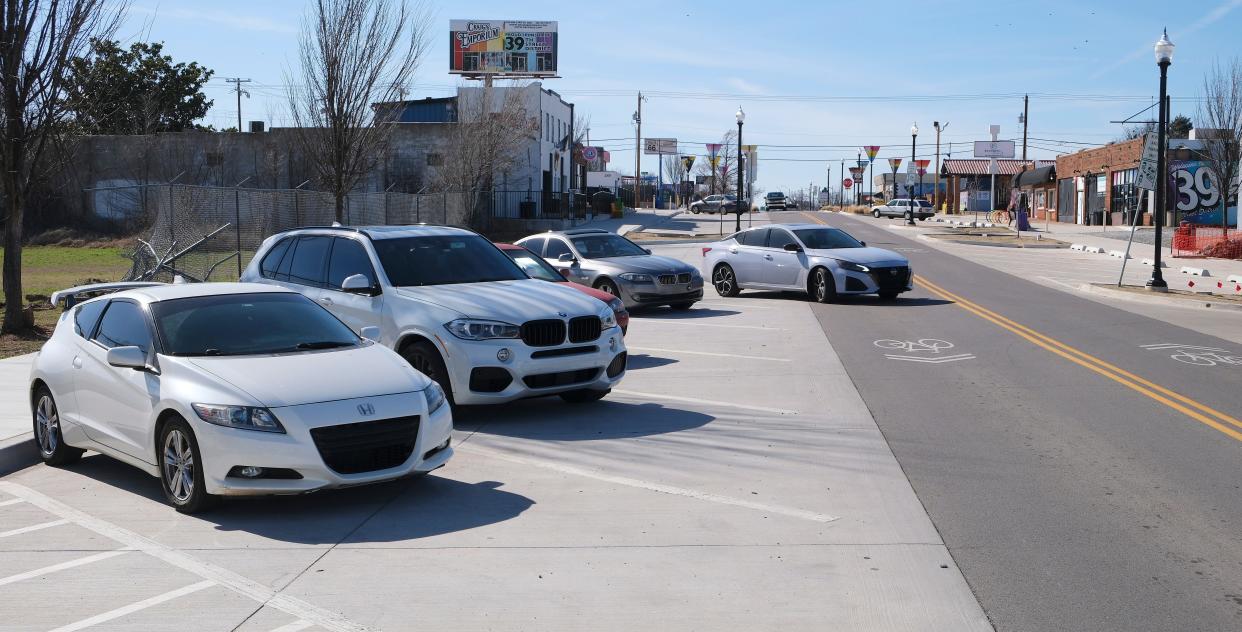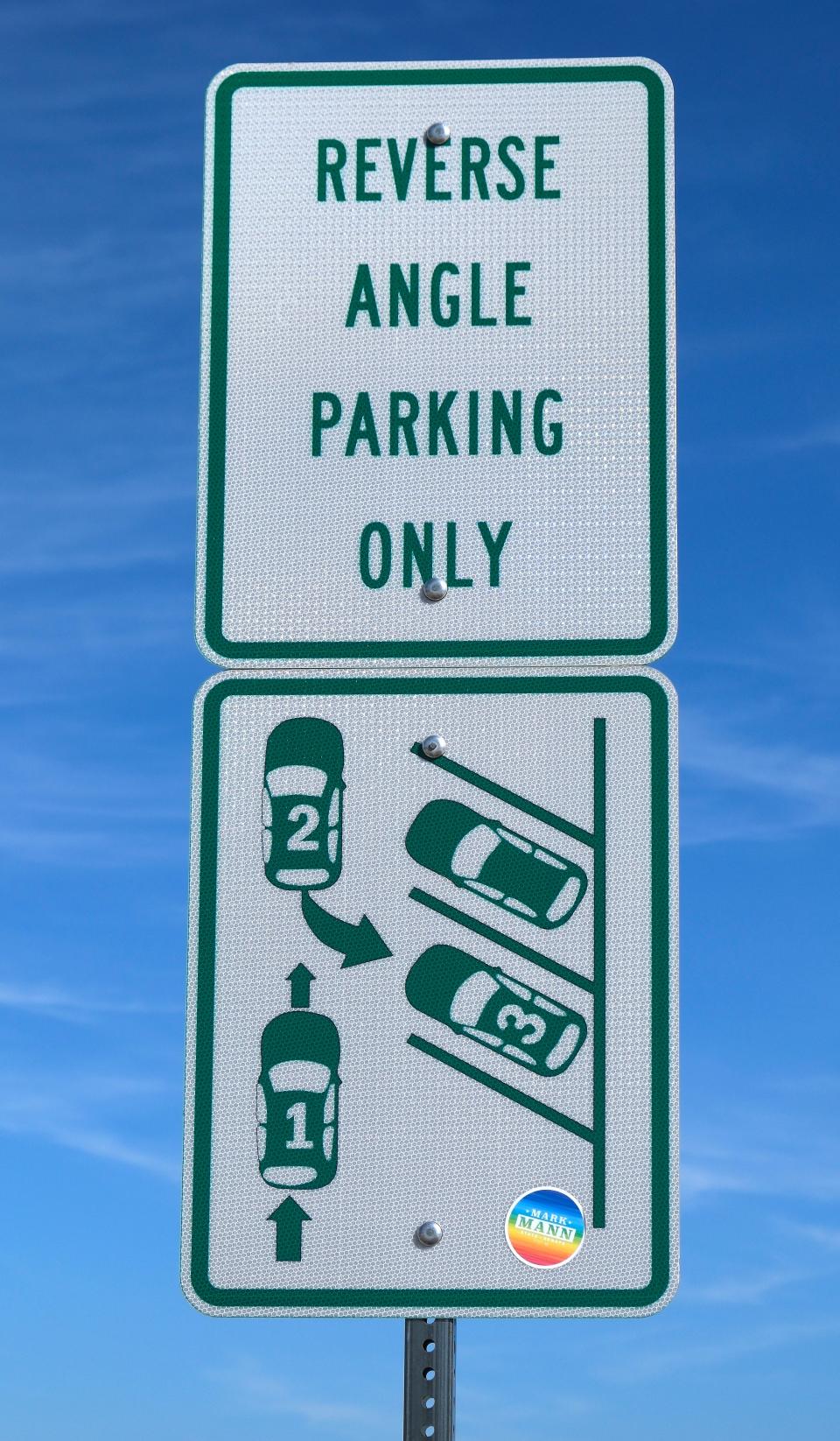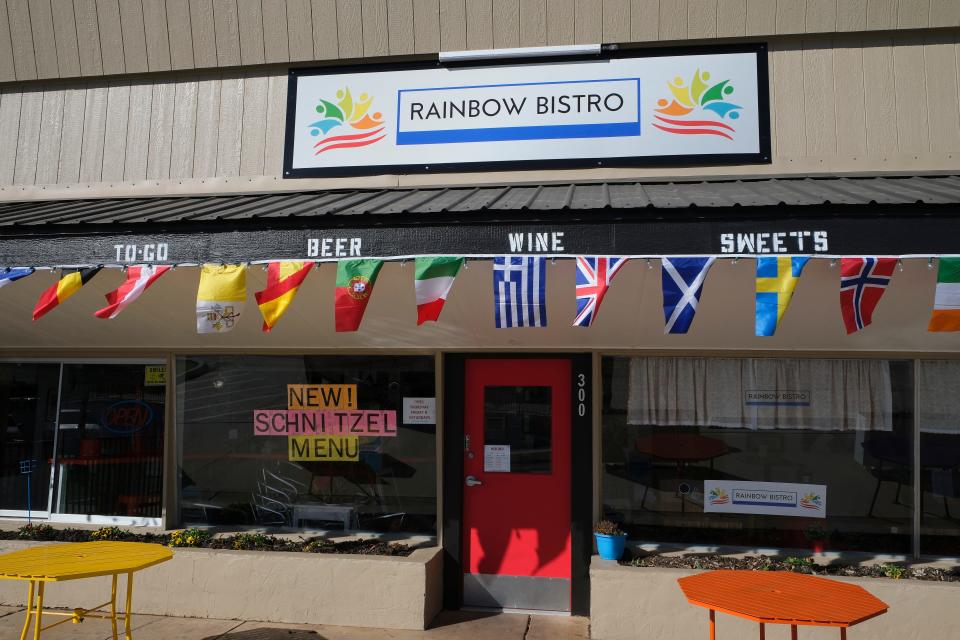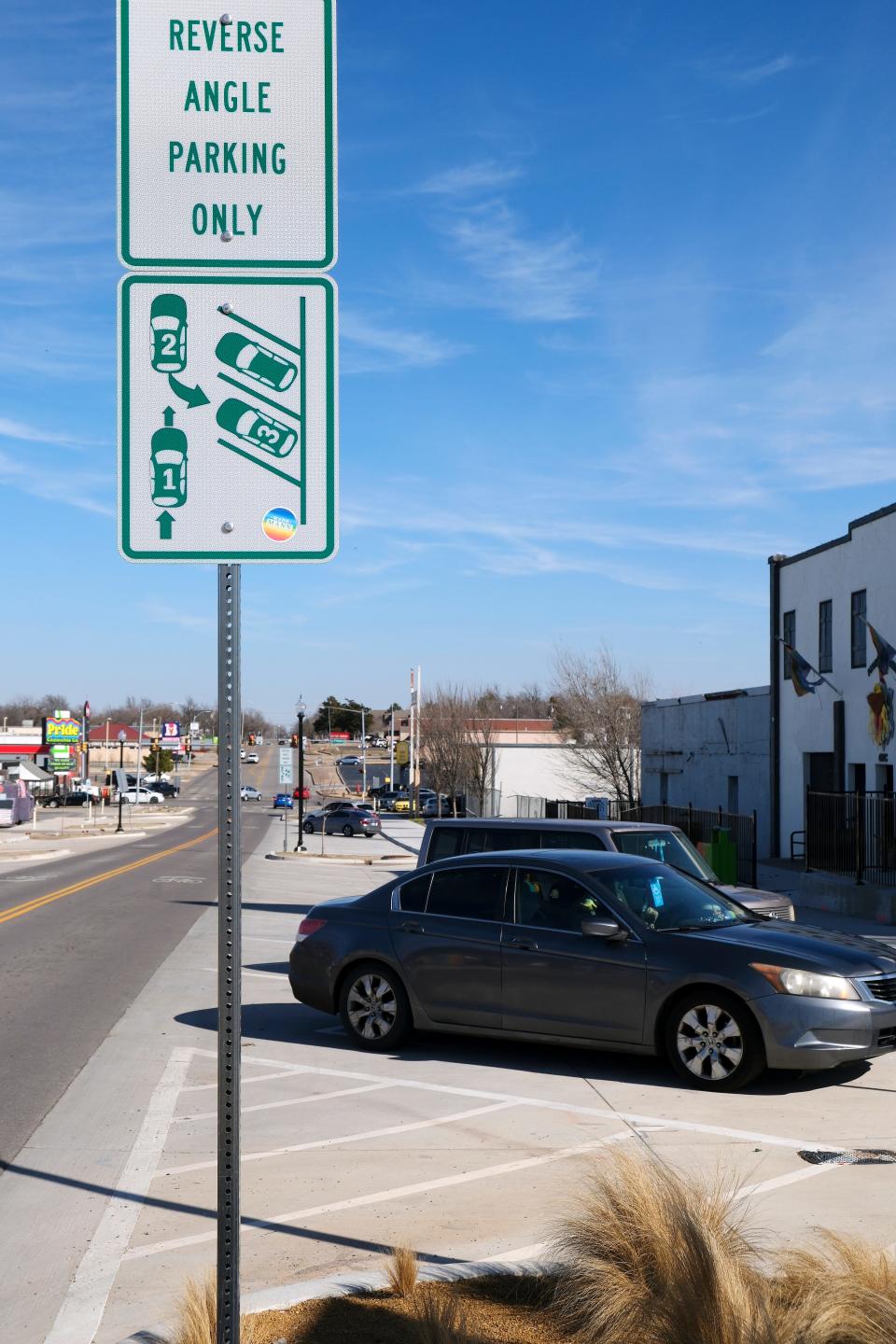Why is reverse-angle parking in OKC's 39th St. District controversial? Stakeholders weigh in.

Traffic commissioners voted recently to retain reverse-angle parking spaces in Oklahoma City’s historic LGBTQ+ district after months of friction with area businesses about the change.
The decision culminated negotiations spanning most of last year between the community's business owners in the 39th Street District and the city’s planners and traffic officials. Advocates say reverse-angle parking makes streets safer and easier to access for retail and bar traffic, but critics have argued the concept is too unfamiliar and challenging to most drivers.
Ward 2 Traffic Commissioner Rob Littlefield, a vocal supporter of the reverse-parking experiment, said the objective is to learn from how it's working in the 39th Street District before implementing it in other areas of the city.
“I’m a big believer that municipalities have to start working more towards other forms of accommodating people getting around and not accommodating the car all the time,” Littlefield said. “Especially as cities grow and they become more concentrated, we have to start getting this to where cars don’t have priority anymore. People walking do, people riding bikes do and people riding mass transit do.”
More: As OKC continues to expand, it will encounter massive traffic problems similar cities have.
What is reverse-angle parking?

Reverse-angle, or “back-in” angle, parking is a traffic engineering technique meant to improve safety and is finding wider adoption in urban areas and major cities.
The concept is essentially angled parking spaces, but angled against the flow of traffic. Drivers pull past their intended parking space, then reverse their vehicle into the space with the head of the vehicle facing out. Then, the driver can simply pull forward to drive away, rather than backing into oncoming traffic.
Critics argue that not all drivers are skilled enough to back into parking spaces and that the technique requires incoming traffic to wait until the driver finishes parking, causing more frequent congestion and increasing the potential for crashes.
Does reverse-angle parking work in OKC? Planners test concept
Planners implemented reverse-angle parking in the 39th Street District, the metro’s historically LGBTQ+ neighborhood, as the city finished the area’s streetscape after the pandemic’s height.
The incorporation of reverse-angle parking was in response to frequent calls for more parking in the area and safer access for bicyclists, but complaints about the change began to manifest almost immediately.
Reverse-angle parking is a concept new to Oklahoma City, but it’s an idea proponents say would make parking safer and easier for an entertainment district like 39th Street. Marek Cornett, the city's at-large traffic commissioner, said she'd like to see reverse-angle parking implemented throughout the city, but that the key issue lies in familiarizing the concept to more and more people.
"Other cities do this and do it well. Tulsa has it all over, Norman has it all over, so we’re starting to see this in neighboring cities," Cornett said. "And as we start talking about rolling it back and not having an opportunity to gain exposure here either, I think that that’s sending us in the wrong direction."
Best way to park: Is it better to pull or back into parking spots?
Businesses in 39th Street District claimed parking change ineffective
Kyle Merriweather, owner of the Whips N Furs Costumes shop formerly on 2131 NW 39 St., submitted a request last summer for traffic management to convert the spaces on the street back into “normal” head-in parking. Merriweather said that confusion stemming from the parking change was affecting safety in the area, citing what he described as multiple near-collisions, traffic jams and pedestrian concerns.
“The majority of drivers do not follow the back-end parking policy,” Merriweather wrote. “Most members of the public still front-end park. In order to do so, they cross over the oncoming traffic lane to front-end park on the opposite side of the street. When these drivers exit the parking space, they back up in reverse across the oncoming traffic lane and enter the opposite lane to continue forward. This is extremely unsafe and a driving violation.”
The petition was accompanied by signatures of support from numerous other businesspeople in the area. That included Burl Beasley, owner of Rainbow Bistro, who said some of his café customers park correctly while others don’t. By his own count, Beasley said, only about 1 in every 4 people were parking correctly in late 2023.
“The issue with that is, if people aren’t parking correctly, now you can’t see because you’ve been blocked by that truck. You’re parked correctly, but now you can’t see to get out, and now you’re going to accidentally hit somebody or hit a bicyclist, too,” Beasley said.
Ward 8 Traffic Commissioner Kevin George also questioned whether the policy was having the desired effect if so many drivers were still parking incorrectly and so many local businesses weren't happy with the change.
"It sounds great, but when you have the businesses that make that area up, 82% want to change it back to the way it was," George said. "I just can't see keeping it."
OKC agrees to boost education while rolling out more reverse-angle parking
When Merriweather, Beasley and others brought their concerns before the traffic commission, the body decided to delay a decision on the request. Instead, Littlefield asked for updates over several months from the city’s Public Works Department as city employees mounted an awareness campaign about reverse-angle parking on NW 39 Street.
The speed limit in the area was lowered from 35 mph to 25 mph, signage was increased in size to alert visitors to the reverse-angle policy, and how-to flyers were even placed on the windshields of cars that were parked incorrectly. Planners hoped these efforts would lessen complaints and bring about better compliance, but results were mixed at best.
“Education has not worked,” Beasley told commissioners in October. “We’ve put these (flyers) out, and what these serve to do is they serve to anger my customers. They also deter my business because they think they’re getting a parking ticket and they’re not going to come back.”
Beasley said the confusion largely occurred when visitors new to the area weren't familiar with the parking policy. He also said other cities implementing reverse-angle parking often adopted it on one-way streets or roadways where a median divided the lanes, making the change easier.
Littlefield acknowledged that compliance with the parking policy seemed most difficult for drivers at nighttime, but he was hopeful that over time visitors to the area would become more accustomed to the change.
'Compromise' reached to continue traffic improvements

By late 2023, a decision on Merriweather's request had not yet been made, and he and his business had relocated elsewhere. But Littlefield and city planners met with leaders of the 39th Street District Association to discuss additional traffic calming measures that could be implemented.
That included adding flashing stop signs on NW 39 and Barnes, lighting the reverse-angle parking signs for better nighttime visibility, and painting "reverse-angle parking only" on the street near each entrance.
Joe Coffin, 39th Street District board vice president, said recently that the group was supportive of these improvements and would be willing to accept continuing the reverse-angle parking. Littlefield also said he was encouraged by the change in opinion toward the parking policy, but was especially happy to see a new letter of support from Beasley.
"That was all via public officials taking the time to sit down with the citizenry and explain and talk, learn together and listen, and I think we've set a standard," Littlefield said. "That says volumes to the future of Oklahoma City and cases that I am certain that are going to be forthcoming where reverse-angle parking is going to be requested to be applied there, and I'm really proud of that."
Beasley, for his part, accepted the traffic commission's decision as a "compromise," admitting that the policy helped further make the historic enclave a unique district but hoped that planners would now know what to avoid.
"I am very happy with it, as far as them at least making some improvements to what it is now," Beasley said. "And I think what they can get from our area, which I would hope they glean from this, is some lessons learned on what to do and what not to do."
More: A new Rainbow Bistro is on 39th St. It's the latest sign of growth for OKC's LGBTQ+ district
What's next for the district and reverse-angle parking?
The traffic commission has already approved incorporating more reverse-angle parking alongside a mixed-use residential development on NE 4 Street, and more recommendations are likely to appear in the future.
Meanwhile, the 39th Street District Association is focusing on organizing the upcoming Pride Month celebrations, as more properties are sold and new businesses continue moving in. Transportation planner Justin Henry also said that reports showed a dramatic decrease in traffic-related accidents on NW 39 in the past two years since the parking change.
Ward 6 Traffic Commissioner James W. Schuelein said he respected all of the business owners' opinions and complimented Beasley's bistro for being "a gamechanger" in an area known for its bars and nightclubs. But he also believed that reverse-angle parking would prove helpful to the district's ongoing economic development.
"I know that change is hard and it's uncomfortable sometimes, but sometimes a little bit of discomfort over this parking situation is outweighed by the greater good and the safety that it does provide," Schuelein said.

This article originally appeared on Oklahoman: Reverse-angle parking in OKC LGBTQ+ neighborhood retained despite business complaints

